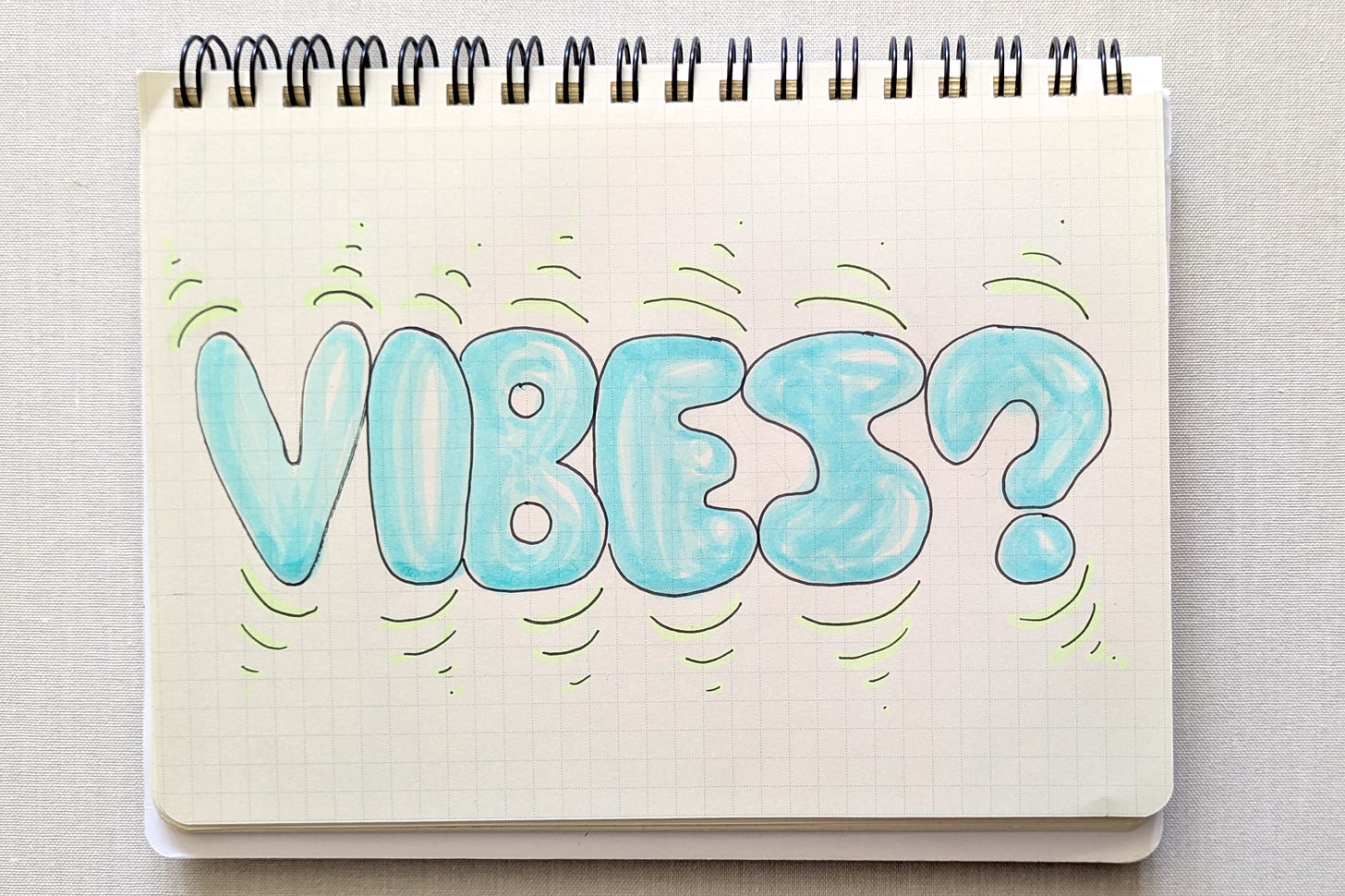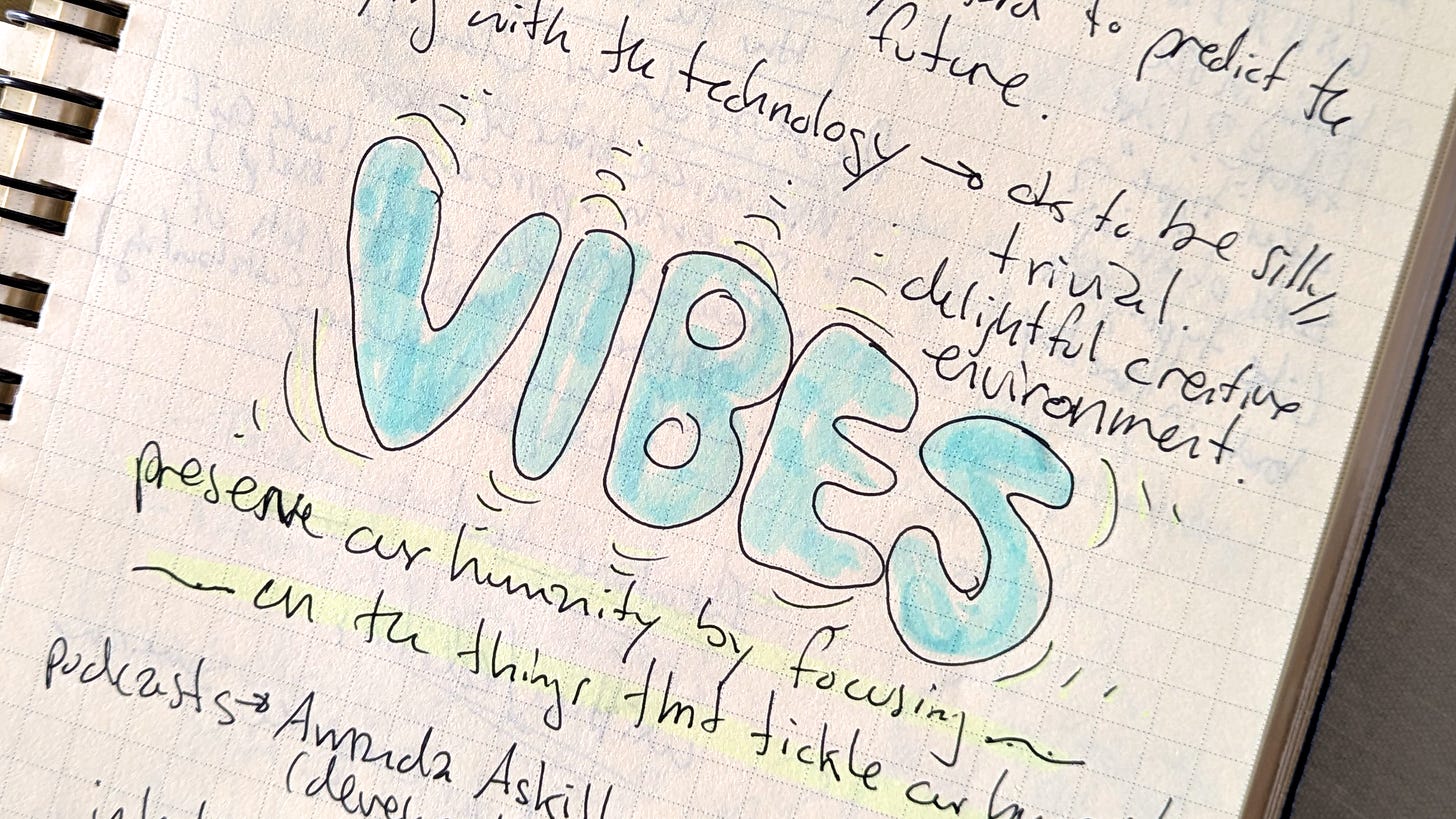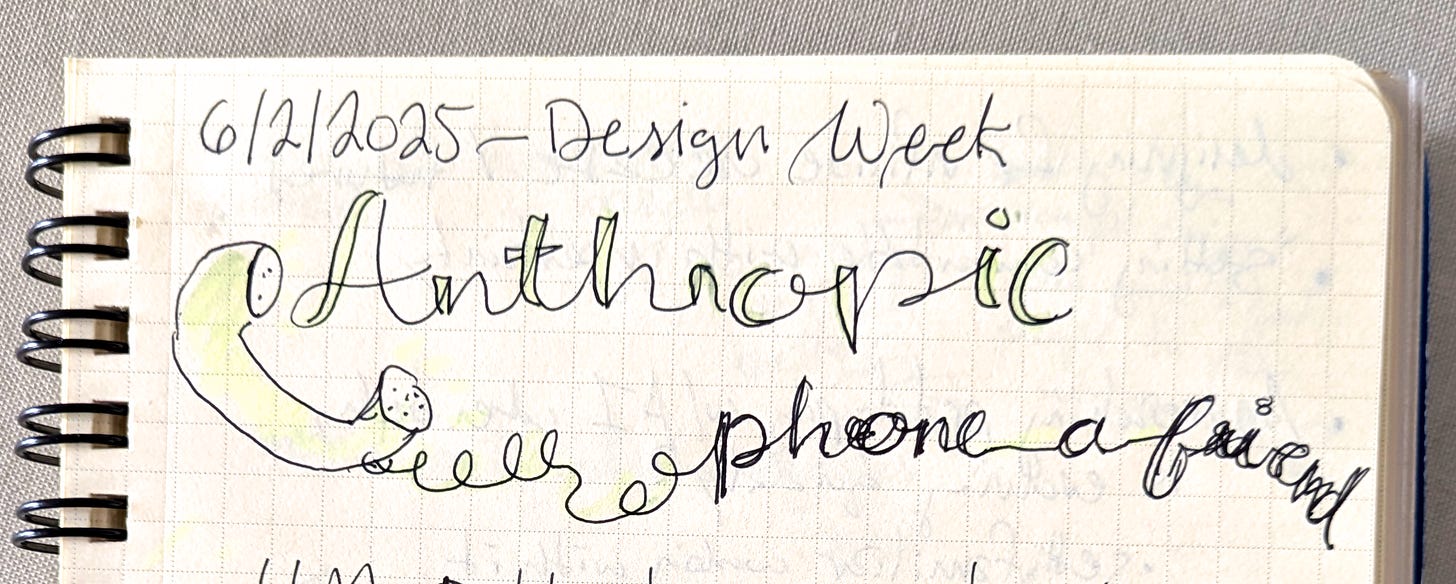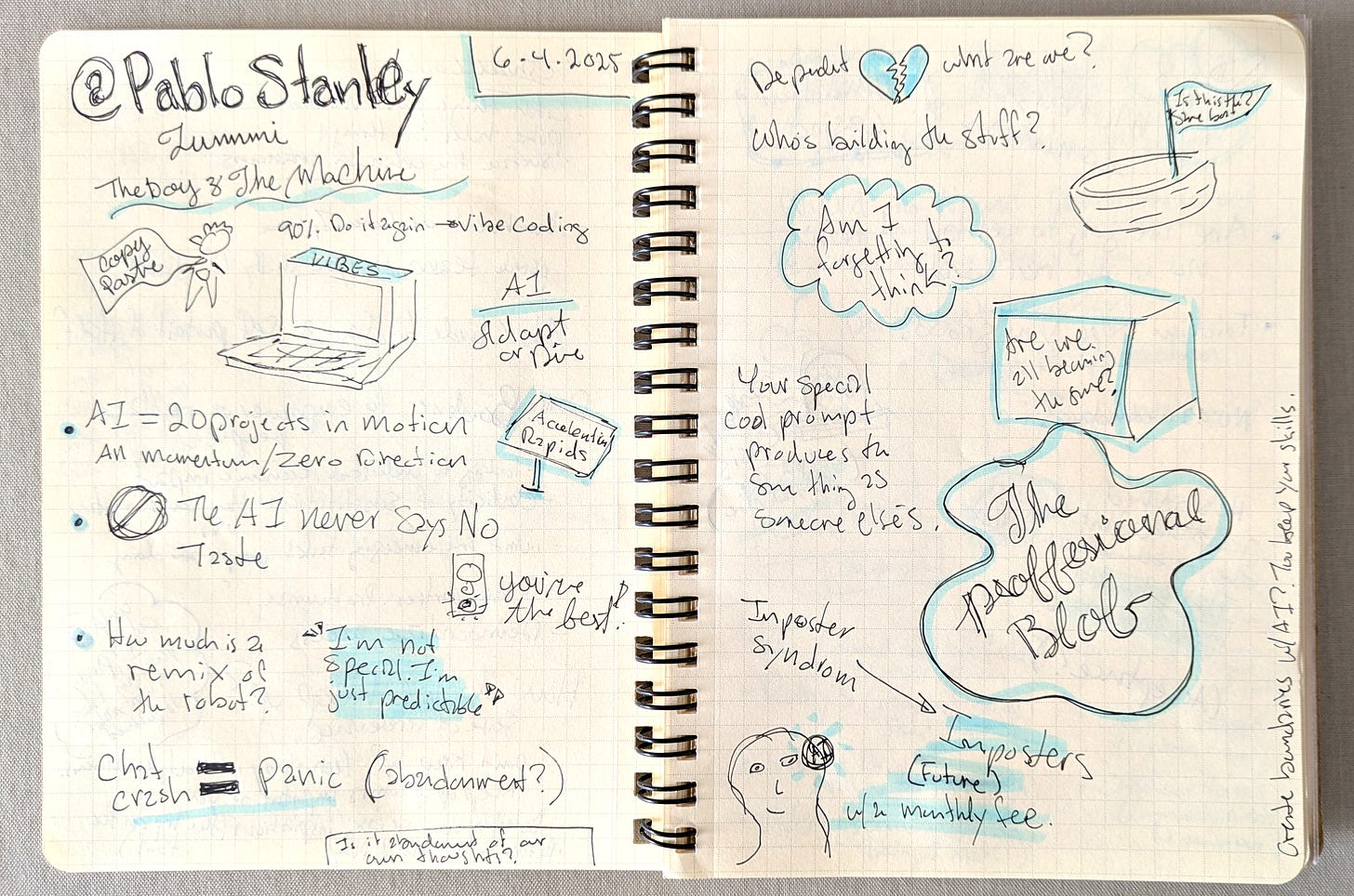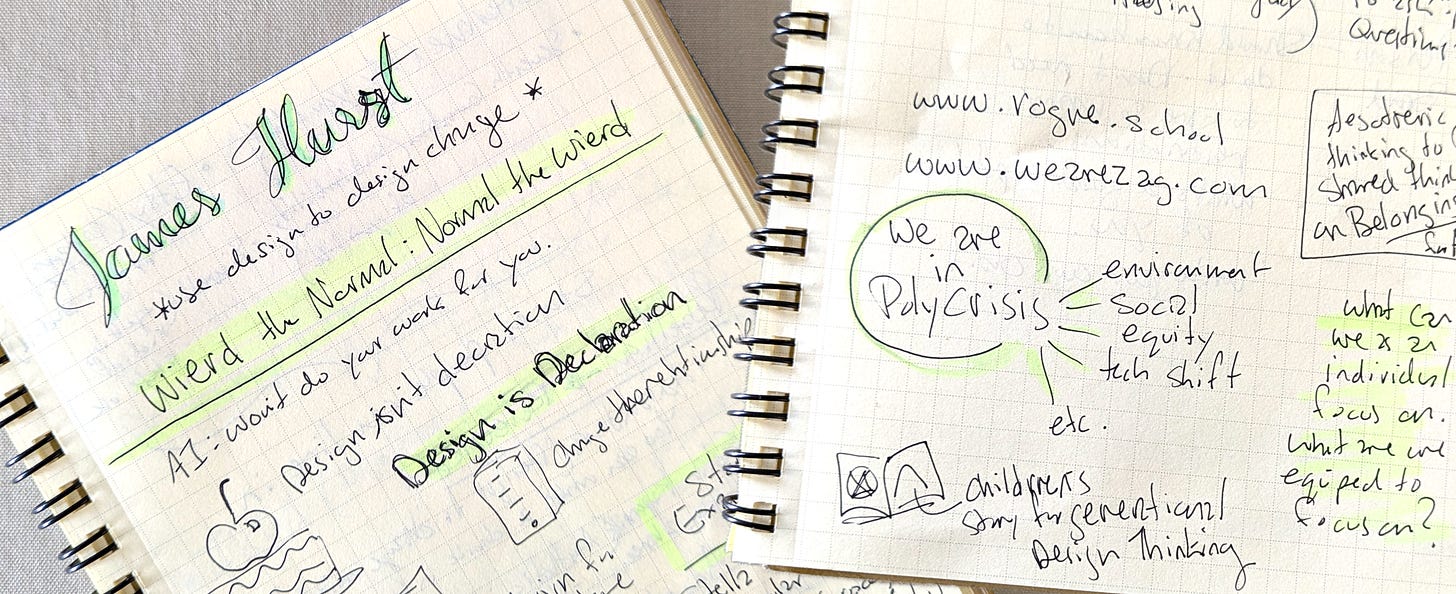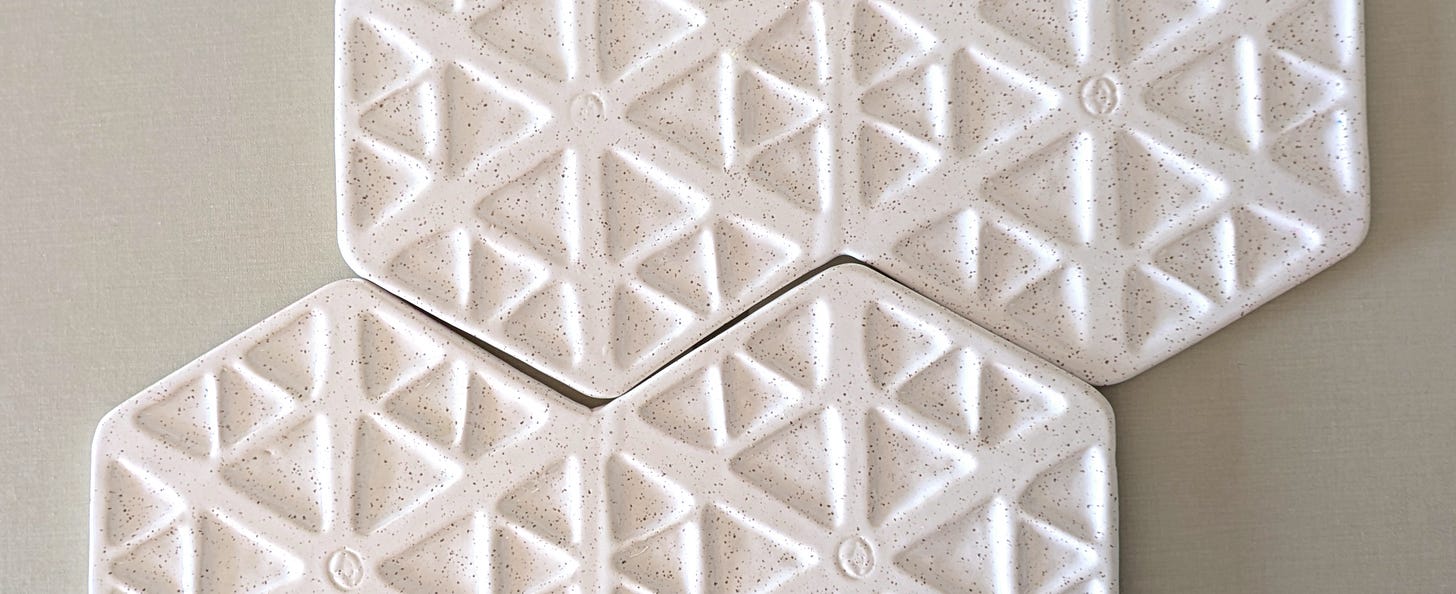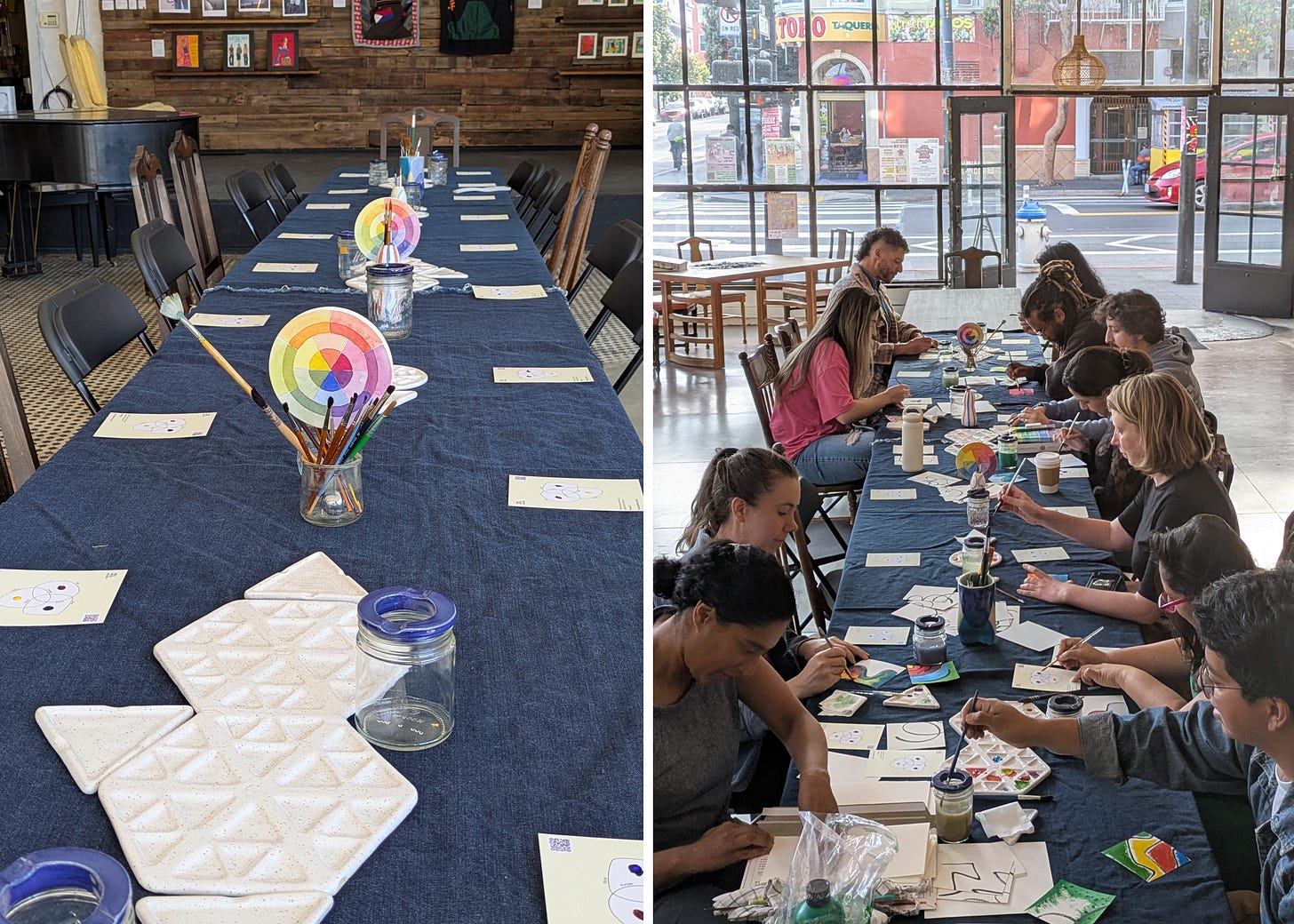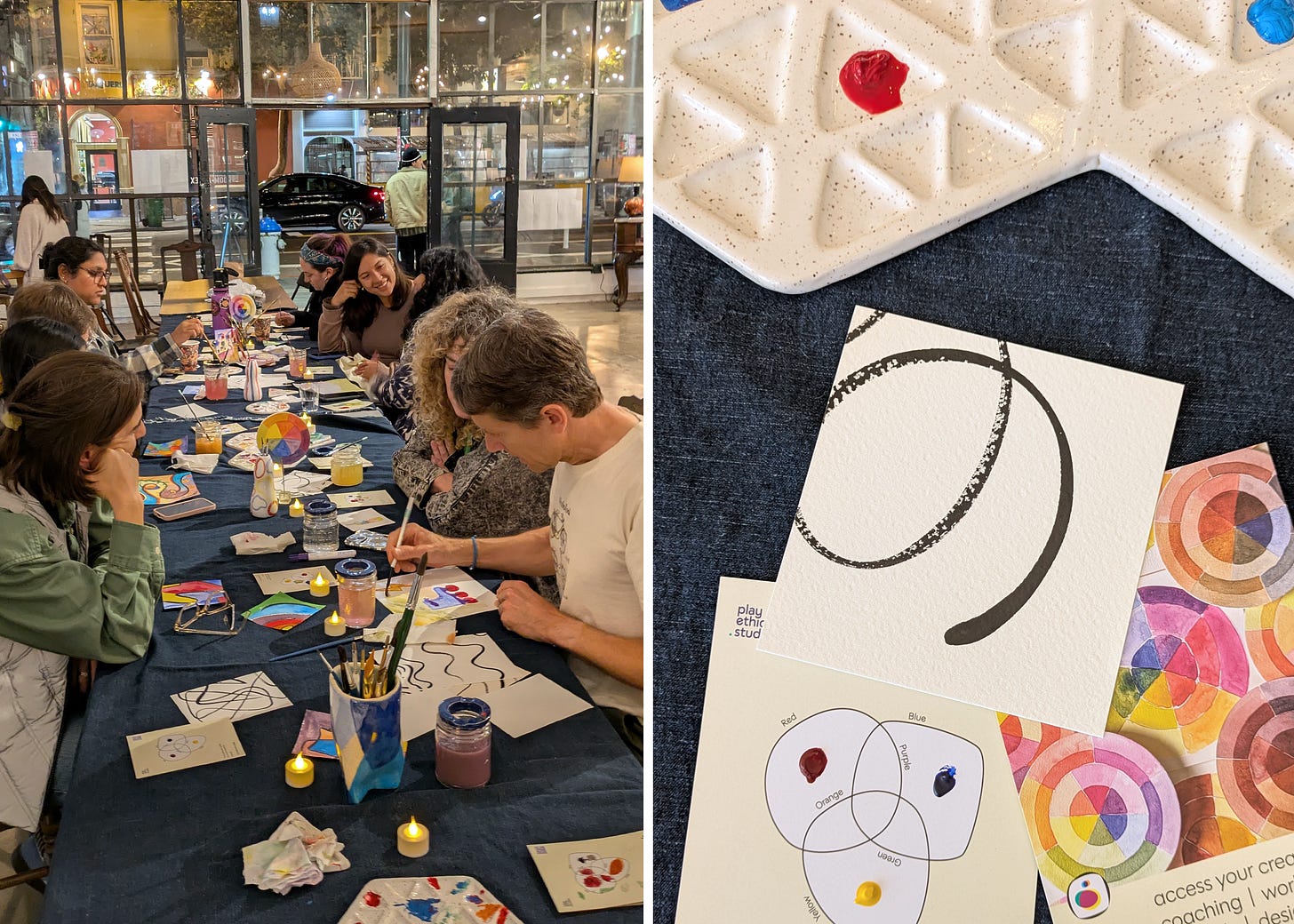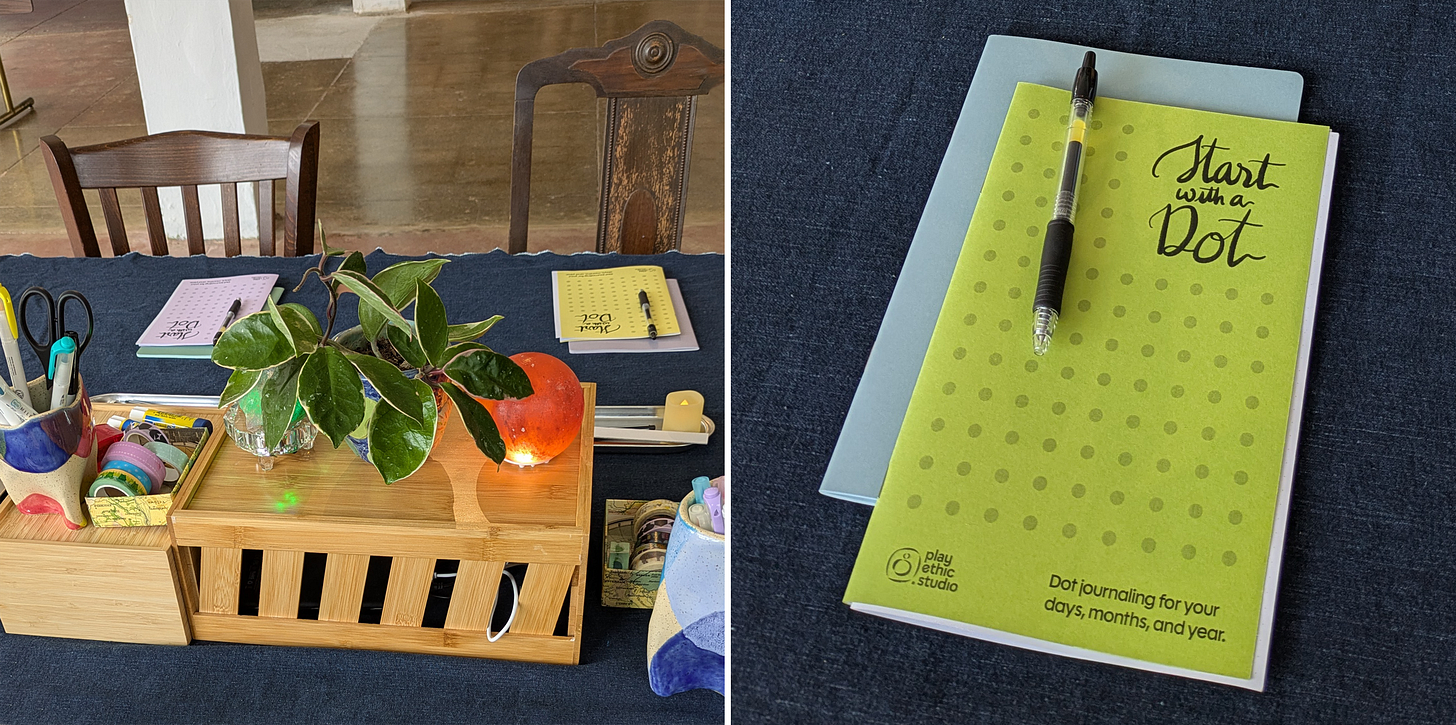The vibes were AI
Reflecting back on SF Design Week
👋 Hello, new readers who found your way to me through SF Design Week!
As we wind down June, I'm reflecting on the beginning of the month and SF Design Week. In this post, I'm sharing some key takeaways from the talks I attended, the main theme that threaded throughout the week, and a recap of the events I hosted at the Drawing Room Annex.
I made it to eleven talks and gatherings, so I can't recap absolutely everything—but there was one theme that showed up everywhere: AI and its relationship to human creativity, which makes sense — we're designers at SF Design Week! I'm often thinking about human creativity, so the topic of AI is always both intriguing and overwhelming.
If you're not interested in learning about AI, skip to the bottom of this post for pics of the events I hosted!
For those sticking around, some of this might help you think about your own creative practice. I'll be continuing to write and share more on this topic without this blog becoming exclusively about AI.
Something to note is that the official theme of SF Design Week for this year was Reform: reshaping outcomes with conscious design. Thinking about that in relation to AI, we are in a giant time period of reshaping.
Observing the “vibes”
Before diving into relevant talks, I have to call out the word that came up most frequently across all these AI discussions: VIBES.
Maybe you've heard the term vibe coding? Vibes is thrown around so much that at this point, I think it's almost losing its meaning or shifted to so many multi-meanings that it doesn't bring much nuance to a discussion. We've had a few years where "vibes" has elevated itself from casual slang to professional vocabulary. There’s a lot of discomfort in the zeitgeist about AI. I notice “vibe” being a different verbal way of saying you’re doing something with generative AI, without saying “generative AI” that might sound more palatable (or even fun) to people.
[These are my general notes and thoughts from the talks, not direct quotes from the speakers.]
Phone a (AI) Friend with Anthropic
This was a broad panel discussion about Claude, the AI tool offered by Anthropic. Being the friendly, helpful AI is very much the branding theme for Claude. If you're curious, you can watch this recent Config talk with Joel Lewenstein, Head of Anthropic Product Design, on the intentional use of referring to AI as a collaborator.
So here are some notes and tidbits that stuck with me:
Where we're headed
Currently, there are two simultaneous (opposite) forces shaping the future of human-AI interaction:
Increasing human distance from AI: Tools like agents that operate more independently from humans
Bringing AI and humans closer: Models designed to work more collaboratively with people (like Claude.)
Designing for boundaries
Their focus is on empowering vs. replacing. It's a thinking partner and pro-human. (Pro-human is a weird term to type out vs. human-centered)
Preserving humanity
It's important to focus on the things that "tickle our humanity"—those uniquely human elements that can't be replicated.
Authorship and differentiation
In a world heading toward output parity, your unique perspective is what makes the difference. When thinking about "human-created," "AI-created," or "AI + Human created," it's the intentionality that separates unique creation from AI slop (which is the current spam d'jour. See John Oliver's most recent Last Week Tonight).
How do we keep up?
From the audience, there was concern about feeling overwhelmed by the amount of AI tech to be aware of and keep up with. And how not to become irrelevant. (The feeling of overwhelm was a theme I heard throughout Design Week conversations.)
An answer was: Don't keep up. Tech will always outpace humans, but you need to keep up with what's important to you.
In talking with others afterward, there had been hope that they'd dig deeper into what this all means for the design industry. Most people felt the presentation stayed surface-level, though the Q&A got more substantive.
Pablo Stanley: Am I the Creative, or Just the Prompt?
Pablo's talk went much deeper into the personal implications of AI integration. He told his story about how using chat based AI across many areas of his life fundamentally changed how he thinks.
As he spoke, he shared a drawing that reflected the various self-reflections he's had in relation to using AI. He mentioned using it in a multitude of aspects in his life to the point it felt like having a "robot-friend" by his side.
Losing his entire ChatGPT
He had an inciting incident: losing his entire ChatGPT history, which sent him into a panic and forced him to reflect. These are the Qs I captured him mentioning he asked of himself (and the world at large):
How much is he creating a remix of the robot?
Who's building the stuff?
Am I forgetting to think?
Are we going to get bad at hearing “no” in the real world because the AI is a validation machine?
Are we all going to become the same?
This self-questioning seemed to help him process what had happened and look at his relationship with AI differently. However, his conclusion surprised me. Given that his story was about becoming incredibly reliant on the technology—to the point where losing access caused panic—I expected him to advocate for finding balance, which he briefly mentioned.
Instead, his takeaway seemed to be acceptance: "This is how my brain works now."
Folks I chatted with liked that the talk went deeper than other AI discussions. Unfortunately, there was no time for Q&A since Pablo had to rush off, which left us without the group discussion this topic deserved.
James Hurst: The Tension Between Familiar and Unfamiliar
This was one of my favorite talks. Its focus was switching between the ideas of uniqueness and normalcy within the context of branding.
"Weird the normal. Normal the weird."
The majority of his presentation outlined rogue types of branding or using design in a rogue way to approach hard problems. There was another layer to the talk, because James also offers training and services approaching graphic design and branding utilizing AI. To keep with the theme of this post, I'm just going to touch on the aspects most relevant to AI that made their way into his talk.
Aesthetic Intelligence
He used a term I'd never heard before that made instant sense to me: Aesthetic Intelligence. He was using it in the context of how you can utilize it in visual design to help people discover something for themselves. I'm pulling it out here because, as it relates to AI, I wonder if people will begin to value their own "aesthetic intelligence" more highly. Will it help with critical thinking when it comes to spotting something nefarious made with AI?
Inductive Reasoning
His AI-related advice was practical: Let AI handle the deductive reasoning, then ask yourself, "What didn't the AI tell me?" Use that gap to push toward inductive reasoning and insights only you can provide.
What can we focus on?
James's talk touched on how we're living through a "polycrisis"—multiple crises happening simultaneously, which includes the tech shift of AI.
When getting involved with or designing for specific solutions amid the polycrisis, the key question to ask ourselves is: What are we uniquely equipped to focus on? That's where to put our energy.
This echoes what was said at the Anthropic talk about reducing overwhelm.
How I'm feeling after SF Design Week
There's a lot to contemplate about AI, creativity, and maintaining our groundedness in the scope of it all. AI is something I spend considerable time reading about, thinking about, and attending talks on. You can expect more musings on this topic in future posts, especially as it relates to maintaining our creative health.
Events hosted by Play Ethic Studio
Now for the fun pics—this is how it went at my Drawing Room Annex events! I'm so thankful to them for providing the space to gather. If you're local, please visit their galleries.
Friday's Watercolor Social
For the Communal Table event, I finally brought to life something I'd been wanting to make for ages: giant communal watercolor palettes. These oversized palettes were designed specifically for shared mixing and exploration, creating a central gathering point for people to play. I provided some inked watercolor sheets to act as a "starting prompt" if people wanted it.
All evening, it was wonderful to see people from Design Week drop by the Drawing Room Annex. There's something special about providing a space where the design community can unwind, play, and connect with each other in a unique way.
If you’re wishing you’d gotten to play with the palettes in person, there are color mixing zines and watercolor palettes currently available in the shop.
Monday's Visual Dot Journaling Workshop
In my Monday workshop, I taught analog planning and reflection tools, and we naturally found ourselves talking about AI and what it feels like to our brains. I'm happy to report that analog tools like dot journaling can help keep us grounded in our thoughts—a nice counterbalance to the swirl and circling people described in some of the AI discussions throughout the week.
I'm planning to teach this workshop again in September, so stay on my mailing list to be notified when tickets go on sale!
Wondering if I used AI to collaborate on this post?
I did, using Claude. And I think "collaborate" is an accurate term in this instance. This is the first blog post I've ever written utilizing AI in this way. I'll note that the time it took to write was essentially the same as writing this type of post without AI.
This is not me advocating for you to use it. I can confidently say that this is entirely my thinking, dot connecting, and fits with the voice in my head. For transparency, I'll share my process:
Input my complete rough draft
Reviewed the first draft from Claude that retained the majority of my structure and words.
I asked a lot of questions about nuance of what I wanted to say.
Fact-checked when it made assumptions
Made edits to the draft outside of Claude.
Brought it back in and did round 2 utilizing same process as above.
Made real-time decisions about what to keep vs. change
Made the last final tweaks on my own, here in Substack, and utilizing Grammarly. Spelling and punctuation have always been a challenge for me.
What’s most important to me is that you’re understanding what I’m aiming to express.


